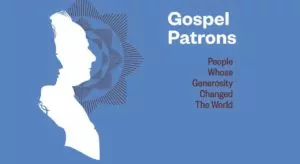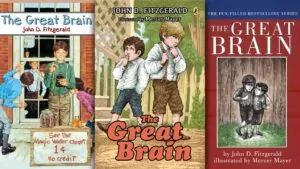Parents need to know that,
whether it’s biblical fiction
or a favorite boy band,
innocent interests are being used
to draw good kids into evil,
dangerous corners of the Web
****
Warning: the following addresses pornography and sexual content
Born in 1998, I grew up in the generation when the iPod Touch and cellphones were starting to become more accessible to teens. This had a massive effect on my journey through puberty, my struggle to view sexuality in a healthy, biblical manner, my exposure to non-biblical perspectives and content, and my relationships with peers. This technology was new to parents as well, and many were none the wiser to what information and entertainment their children were suddenly able to access.
Today, we no longer have that excuse; private, personal access to the Internet is here, and it is riddled with temptations and depraved content. Parents need to keep informed.
No real limits, no oversight
At age 13, I was surrounded by classmates using the iPod Touch, which had all the features of an iPhone except the option to place calls or texts without Wifi. Any app could be downloaded, any website accessed, and any game played.
I bought a second-hand iPod off of a classmate for $20, and a whole new world opened up to me; I could message my friends from home rather than having to call them on the landline! We could talk privately without being overheard, something that was of paramount value to awkward youths who had reached the age when nothing is more embarrassing than your parents overhearing you discuss crushes and the like.
Just girls reading Old Testament fiction…
Several apps began trending amongst my peers, one of which was an app and website anyone could use to write a book, and anyone else could use to read those books; all you needed to do was create an account. This was very popular amongst girls my age. A particular fictional favorite series in my class was set in Old Testament times; it was from a young woman’s point of view, and contained a fairly innocent love triangle. There was little harm in the series itself.
But the app contained scores of books, accessible to whoever desired to read them, and as we all began exploring the app, we discovered something else entirely: erotica.
I cannot count the number of poorly written stories I devoured. My parents had told me about the basics of sex, and about God’s design for it, but this new narrative was something completely different. It didn’t matter that I had been taught a biblical view of sex; I now had access to a different definition of it.
Curiosity can fester into a full-fledged addiction. We see this with drugs, alcohol, money – all of which are things that children raised in a God-fearing home do not have unhindered access to, things that parents can monitor with relative ease.
And it used to be simple to monitor your child’s access to pornography; it took bold action to get ahold of dirty magazines purchased at a corner store, and those magazines had to be hidden under a bed. Even when looking back on your lifetime to your own childhood, most if not all of parents would agree that children and teenagers did not have the same ready access to pornography then.
Today is not the same. If your child has a device, they have the possibility to discover virtually thousands of corner store magazine racks. And all of this in the palm of their hand.
Whether in the past or the present, children are not equipped with the discretion to navigate most conversations about sex, let alone sexual content and entertainment. By the age of 15, I had read hundreds of gratuitously graphic pieces of literary pornography; I was addicted.
The majority of these consisted of “fanfiction.”
… to erotic fan fiction
Fanfiction is defined by Google as “fiction written by a fan of, and featuring characters from, a particular TV series, movie, etc.” To give some further context, the popular and sexually charged book-turned-film franchise Fifty Shades of Grey started out as a fanfiction of the popular young adult vampire series Twilight.
There are different genres in fanfiction, one of which includes the “y/n” character, meaning “your name”; these stories are written as though from the reader’s point of view, and fuel fantasies in which the reader is inserted into romantic and sexual relationships with the characters from whatever story the fanfiction is inspired by. Young preteens can explore written fantasies in which they are the love interest of one or more of their favorite characters, fueling incredibly unrealistic ideals and twisted notions of healthy sexuality.
Another genre of fanfiction that is hugely popular is where two characters who do not have a romantic/sexual relationship in the original canonical story are given a new storyline. The vast majority of these “ships” (the slang term for relationships) are not heterosexual. Preteens and teens are lured in by extra content about their favorite characters, while gradually being desensitized to sexually graphic content. They can take their pick from hundreds of smutty stories about Sherlock Holmes and John Watson, Captain America’s Steve Rogers and Bucky Barnes, Harry Potter’s Sirius Black and Remus Lupin, Merlin and Arthur, etc.
Even more alarming are the number of stories in which real people, generally celebrities, are “shipped” together. Does your child have a favorite secular music artist? Chances are, there are fanfictions out there about them. Most common among these are fanfictions about members of boy bands. There are stories in which two band members have a secret relationship behind the scenes, and fans don’t know; there are stories in which two band members – who live in an alternate universe and happen to be vampires, or rich CEOs of companies, or strippers, or baristas – meet and start dating. There are stories in which five plus members of a boy band are all members of a werewolf pack, and engage in polygamous sexual activities together.
As PluggedIn’s article on fanfiction puts it, “a major draw for fanfiction writers and readers is usually the exploration of forbidden romance.”
Maybe you have parental controls installed on your phone, and you think, “My child has no access to these sorts of things.” But fanfiction is literary, and it isn’t screened in the same way that visual pornography is. Children can access these stories by merely clicking “I accept” after reading a warning of graphic content.
Boys and their cartoons…
While I and many of my female peers were exploring these things, the boys were doing something similar. Many boys were watching “anime” on their iPods and iPhones. Anime is defined by Google as “a style of Japanese film and television animation, typically aimed at adults as well as children.” Just as with the content on my writing/reading app, some of these anime shows were harmless, and even contained messages of loyalty, friendship, and other important themes.
If you’ve ever noticed your child watching an anime series, you may have thought it was merely an innocent cartoon, and not paid any further attention to it. But many anime series have overtly sexualized female character designs, with unnatural body proportions, and severely immodest clothing. Worse than that, many anime series contain graphic sexual scenes; there is even a category of anime geared specifically towards pornographic content.
Male peers admitted to me in later conversation that it was through anime that they discovered pornographic websites. As young teens, they had no credit cards to pay for authentic, licensed anime streaming sites, and so they accessed their anime shows through illegal websites, many of which had flashing advertisements on every page. Nearly every boy in my class and wider peer group was watching pornography on a regular basis by the age of sixteen; some of us girls were curious enough to check it out, too.
The pull parents didn’t understand
Our parents tried to keep an eye on what we were up to. But it was easy enough to convince them that we were simply reading a harmless book or watching a harmless cartoon. For some of us, our parents set a boundary of not having our electronic devices in our rooms when we went to bed, but we still had access to these things in the bathroom, on the school bus, even in the foyer at school.
If you passed by your child in the living room and saw them reading a paragraph or watching an animated show on their phone, how often would you sit next to them and see what they’re reading? Or, perhaps the more relevant question: what is the likelihood they would hide their screen immediately?
Many parents today fall into one of two categories:
- they don’t want to invade the privacy of their teens, and thus leave them to their devices
- or they constantly demand to know what their children are up to, leading their kids to become more aloof and secretive.
I remember being a young teen, and how I chafed against my mother’s occasional questions about what I was reading on my phone. I’d even blatantly lie about it for fear of the truth being discovered. I cannot imagine how much more I would have pulled away from her if she had badgered me about these things.
Leaving our kids defenseless
In Reformed circles, it is not uncommon for parents to refrain from teaching their children about sex before adulthood. In some cases, parents are so uncomfortable with this that they do not tell their children until they are preparing for marriage, or they do not tell them at all.
Some parents, in contrast, give their children too many details at too young an age. I have peers who fall into all of these categories. Finding the balance in this seems very difficult.
The biggest issue here is that, due to the prevalence of graphic sexual content available to today’s youth, many are learning about sex through erotic literature or visual pornography. Pornography is typically filmed by men, for men; erotica is typically written by women, for women. Men are creating a fantasy of what to expect from women in a sexual relationship, and women are creating a fantasy of what to expect from men in a sexual relationship.
The result is an incredibly narcissistic view of sexuality, stemming from a focus on the reader or viewer’s satisfaction, with no consideration for the other party and no understanding of God’s design for sex and the expression of love it is meant to be. When a boy or young man watches porn, he is buying into a fantasy where he has ultimate power, and the woman’s presence is meant for his pleasure alone. When a girl or young woman reads erotica, she is buying into a fantasy where a man is so utterly consumed by his need for her that he will do absolutely anything for her, as he cannot resist her near-goddess status. (Most females depicted in these books do not believe themselves to be attractive, feeding everyday women the narrative that the most attractive men out there will be attracted to them, and they should not “settle for less.”)
This sort of content creates a fantasy of self-worship. It teaches boys and girls to view sex through a greedy, twisted lens.
And it’s not slowing down.
Common Sense Media’s research report “Teens and Pornography” surveyed a demographically representative set of teens in the United States, and the collected data revealed that 72% of the teens surveyed they had seen pornography; of those, 54% saw it by age 13, including the 15% who saw it by age 11.
I am a Gen Z’er. The Oxford Dictionary defines Generation Z as
“the group of people who were born between the late 1990s and the early 2010s, who are regarded as being very familiar with the Internet.”
I would like to suggest a new definition: “The group of people born between the late 1990s and the early 2010s who have been, en masse, bombarded with pervasive, self-indulgent content – deemed acceptable under the label of expression – to the point that they have been convinced to take up the mantle of blurring the line between advancement and destruction.”
Better to pluck out your eyes
Roughly two years ago, I made the decision to leave social media. Facebook, Instagram, Snapchat, I deleted my accounts for all three. Very quickly I noticed an improvement in my moods, thought processes, and overall mental health.
But today’s modern message of the importance of identity and sexual expression is everywhere. It’s on Pinterest, in the form of an advertisement under the search bar titled, “Beyond blue and pink – Breaking down the binary.” It’s on YouTube, in the form of reaction videos in which you, the viewer, watch someone else react to a video, typically of a third “someone else.” There is no end to technology’s primary narrative: “It’s all about you.”
Youth today are growing up surrounded by a message that is directly contradictory to God’s Word. That’s just as true for the youth of the Church. Don’t be fooled into thinking your children are the exception; my parents did their best with what knowledge they had, but without directly monitoring my every move online, they had no way they could know the full extent of what I was accessing. As someone who grew up in the Church and in a Bible-teaching home, I could still write multiple articles on how today’s social environment and media made me question my sexuality, struggle with extremely low self-esteem, and buy into the notion that a message that contradicts Scripture is maybe not so harmful after all.
By the grace of God, the worst of those seasons are behind me, but there are still after-effects that have repercussions on my day-to-day life. Many peers I’ve spoken to about this express the same sentiment.
Not all e-books are harmful. Not all animation is harmful. In both categories, there are stories to be found with great messages. But they are the rare diamonds in a pile of coal, and parents must be made aware of the danger present in these forms of entertainment. On a broader scale, parents ought to know how many seemingly “harmless” things their children have access to, and the way it is affecting the development, lifestyles, and perspectives of youth across Western civilization as a whole.
If you do not want your child exposed to the Internet or social media, but are looking for a smartphone alternative that offers calling and texting in case of emergencies, you can search for “dumb phone” offerings online (though you’ll need to do your research as even some “dumb phones” still do have access to the Internet). Americans have a couple of options: the Light Phone (www.thelightphone.com) and the Gabb Phone (https://gabb.com).















